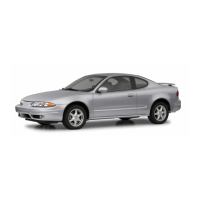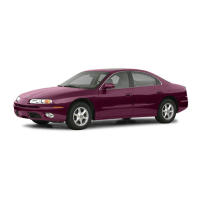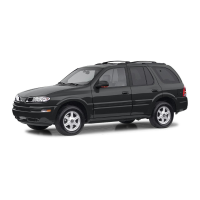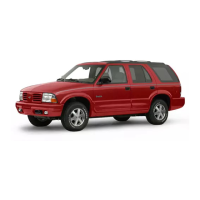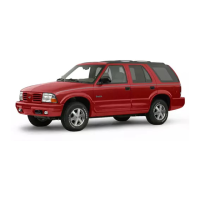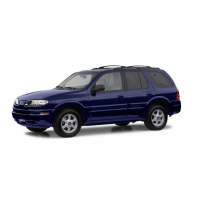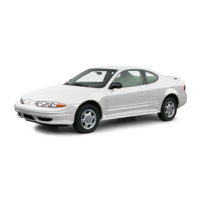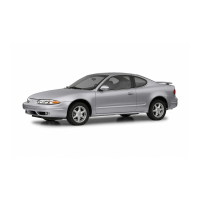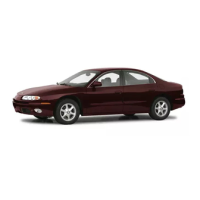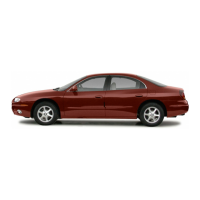Automatic Transmission Operation
There are several different positions for your shift lever
PARK (P): This position locks the rear wheels. It’s
the best position to use when you start the engine
because your vehicle can’t move easily.
It
is dangerous to get out of your vehicle
if
the
shift lever
is
not fully
in
PARK (P) with the
parking brake firmly set. Your vehicle can roll.
Don’t leave your vehicle when the engine
is
running unless you have to. If you have left the
engine running, the vehicle can move
suddenly. You or others could be injured. To
be sure your vehicle won’t move, even when
you’re on fairly level ground, always set your
parking brake and move the shift lever to
PARK (P). See “Shifting Into Park (P)”
in
the
Index. If you’re pulling a trailer, see “Towing a
Trailer”
in
the Index.
Ensure the shift lever is fully in PARK (P) before starting
the engine. Your vehicle has an automatic transmission
shift lock control system. You have to fully apply the
regular brakes before you can shift from PARK
(P)
when
the ignition key is in RUN. If you cannot shift out of
PARK (P), ease pressure on the shift lever, press the
button on the shift lever and push the shift lever all
the way into PARK (P) as you maintain brake
application. Move the shift lever into the gear you wish.
See
Shifting
Out
of
Park (P) on page
2-27.
REVERSE
(R):
Use this gear to back up.
Notice:
Shifting to
REVERSE
(R)
while your vehicle
is
moving forward could damage your transmission.
Shift to
REVERSE
(R)
only after your vehicle is
stopped.
To
rock your vehicle back and forth to get out of snow,
ice or sand without damaging your transmission,
see
If
You
Are
Stuck:
In
Sand, Mud, Ice or
Snow
on
page
4-40.
2-22
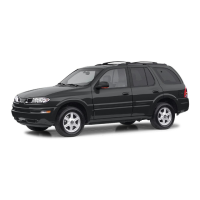
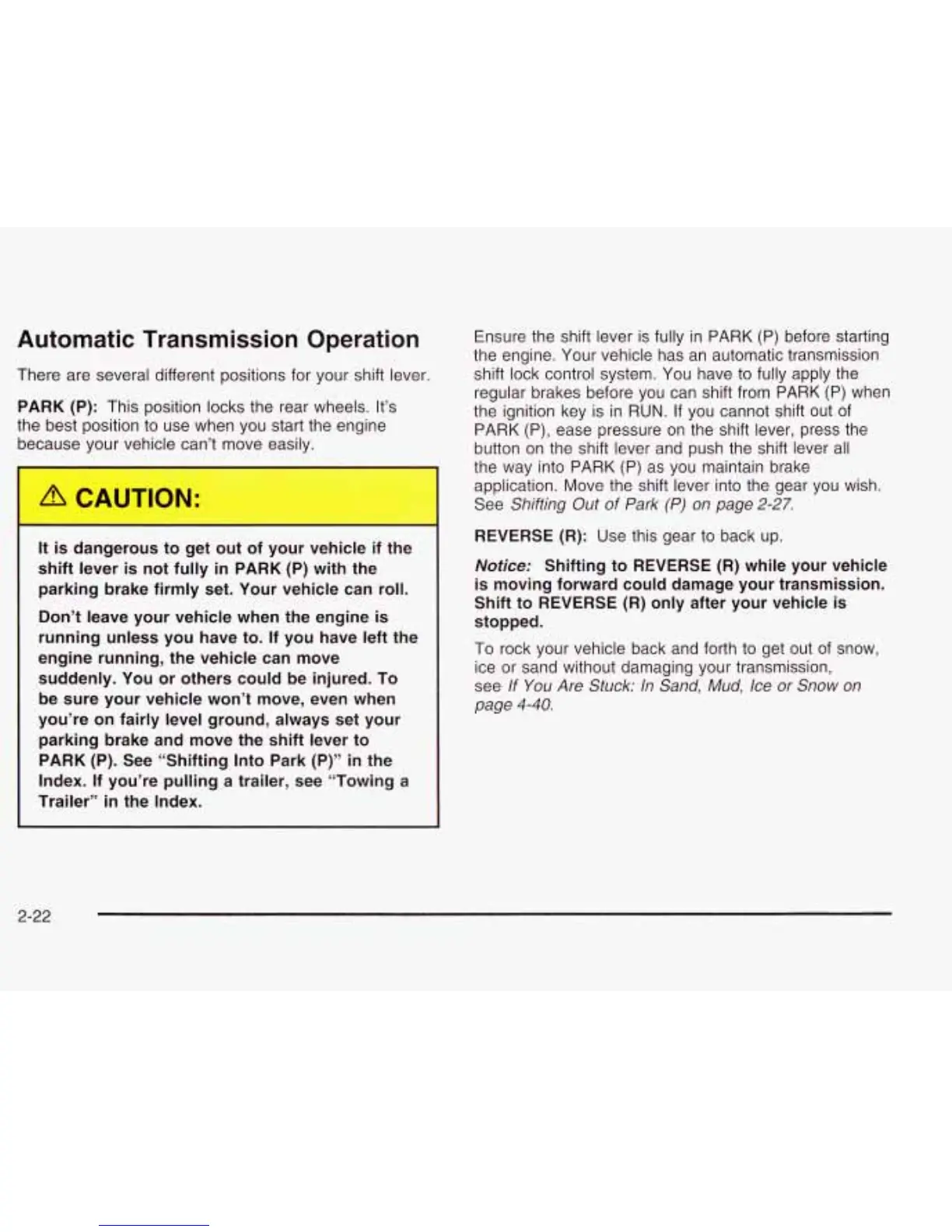